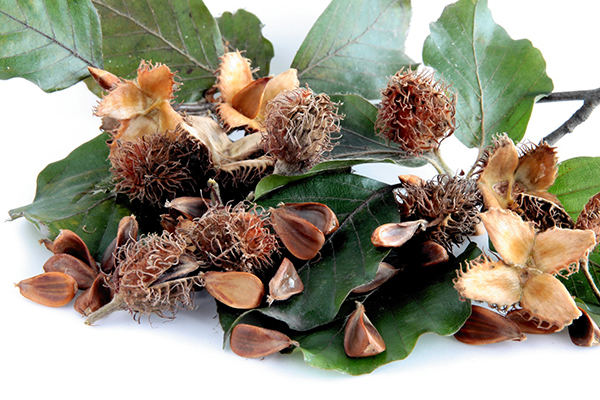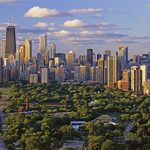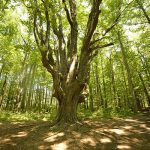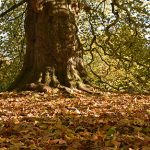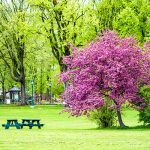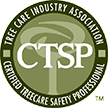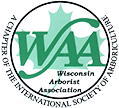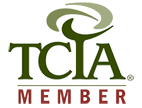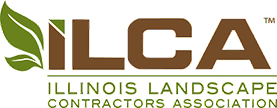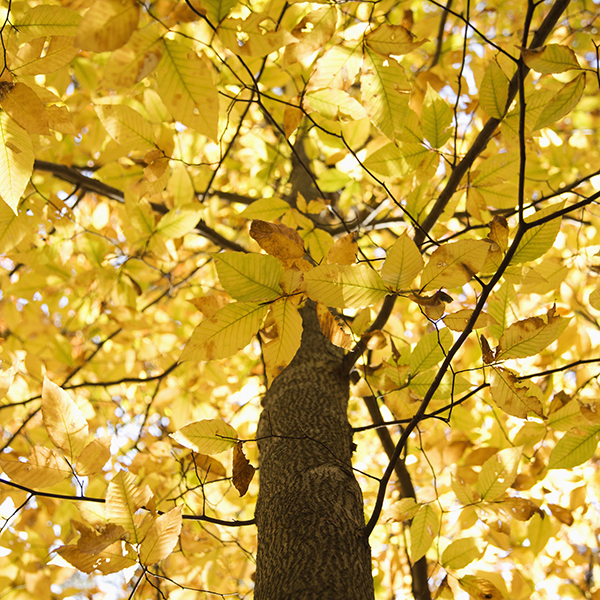
American Beech Trees brighten up Autumn in Chicagoland with their bright yellow leaves
We are back this week to continue our series about Chicago’s native trees with a profile on a tree that has been in this area for thousands of years, the American beech tree (Fagus grandifolia). This tall American hardwood tree is found mostly in the eastern half of the U.S. and southern Canada. It is believed that the American beech was once spread throughout the modern-day continental U.S., from the Atlantic to the Pacific coast, before the last ice age. These trees are quite tall and can reach heights above 100 feet, and they can also live for hundreds of years in the right conditions. American beech trees are most distinguishable by their smooth, silver-gray bark and their angled beechnuts. Their height and expansive canopy make American beeches ideal shade trees.
There are between 10 and 13 known species of beech trees found throughout temperate regions of North America, Europe, and Asia. Most beech trees are classified under the genus Fagus and of these trees, only the American beech tree is native to the U.S. We will discuss some of the different species of beech trees below, but for the most part, this guide focuses on the American beech tree because it is the only one native the U.S. and therefore, it is much more common in our area than other beech trees native to Europe and Asia.
In this guide, we will cover the characteristics of American beech trees, proper care tips, and their main threats from insects and disease, as well as briefly discuss other species of beech trees. If you have an American beech tree on your property, it is important that it receives the proper care to grow to its full potential and live a healthy life. At Hendricksen Tree Care, our ISA certified arborists provide professional tree services in the Chicago area that include maintenance and fertilization, diagnosis and treatment for issues with insects and disease, and tree trimming. We can help care for your American beech trees and help them avoid insects and disease to stay strong and healthy.
Characteristics of American Beech Trees
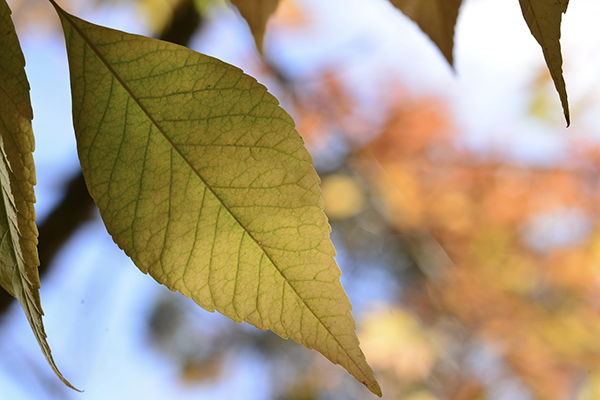
The pointy, oval-shaped leaf of a Beech Tree
The American beech tree is a deciduous, hardwood tree with a large trunk and expansive canopy. Its smooth silver bark, angled beechnuts, and height are the most easily identifiable characteristics of these trees. They are typically planted as shade trees because of their height and canopy size and they are also shade tolerant themselves. American beeches are planted on residential property, but they are most common in wooded areas.
The following are the main characteristics of American beech trees:
- Height: American beech trees generally grow between 50 and 70 feet and their canopies can be 50 to 70 feet wide. These trees have been known to grow over 100 feet tall and live for hundreds of years.
- Leaves: Beech tree leaves are oval shaped and come to a point at the end, and they have a lightly serrated edge. These leaves are dark green during the spring and summer and turn into an impressive golden bronze color in autumn.
- Flowers: The flowers of an American beech tree are not particularly showy. These trees are monoecious so both male and female flowers appear on the same tree. The male flowers are small dangling clusters and the female flower are small spikey buds, both are generally yellow-green in color.
- Fruit: The fruit of the American beech tree is the beechnut. Beechnuts are edible nuts with a spined husk that has three angled sides and sometimes prickles. These nuts are a favorite food among wildlife.

Beechnuts, the edible nut from a Beech Tree
- Bark: The bark of an American beech tree is one of its most distinctive characteristics. It is silver or gray in color, tight around the tree, and smooth to the touch.
Species of Beech Trees
As mentioned above, the American beech tree is the only species of beech tree native to the U.S. There are around 10 other species of beech trees found throughout Europe and Asia under the genus Fagus. The following are some of the most popular non-native beech trees:
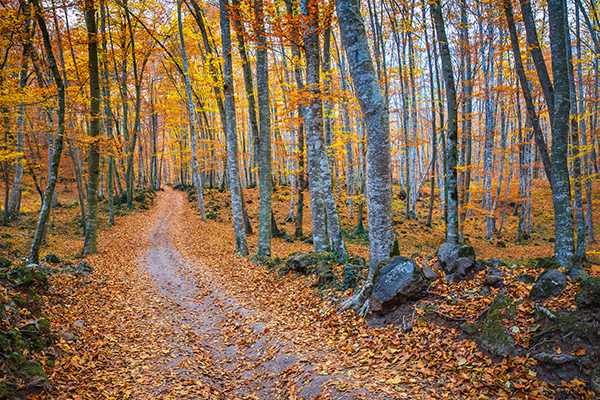
The European Beech Tree, like other Beech Trees, are striking in the Fall time with yellowish leaves and smooth, gray bark
- European Beech: The European beech tree (Fagus sylvatica), also known as the copper beech or purple beech, is a large beech tree native throughout western Europe. These trees grow faster than American beeches (maturing in 30 years as opposed to 40), and they can get as tall as 160 feet. These trees are known as purple beeches because of the color of their leaves. The leaves will turn dark green or purple by mid-summer which makes them a popular choice for an ornamental tree in the U.S.
- Japanese Beech: The Japanese beech (Fagus crenata), also known as Siebold’s beech or buna, is found throughout the forests of Japan. These trees look very similar to American beeches with smooth gray bark and oval shaped leaves, but its leaves have a smoother edge and can be bigger.
- Japanese Blue Beech: The Japanese blue beech (Fagus japonica) is another beech tree native to Japan. This tree is different from the Japanese, European, and American beech in that it is multi-trunked.
- Chinese Beech: The Chinese beech tree (Fagus engleriana) is found throughout central and eastern China. These trees are also multi-trunked with low hanging branches and a very spread out canopy.
- Taiwan Beech: The Taiwan beech tree (Fagus hayatae) is Taiwan’s only native beech tree. This tree is smaller than the other beeches, growing to about 65-70 feet in height, and its branches are thin, curvy, and very spread out.
- Oriental Beech: The oriental beech tree (Fagus orientalis) is found throughout Eastern Europe and Western Asia. It is very similar to the European beech and it even crossbreeds with European beeches in the Balkans region to produce hybrids known as Crimean beeches (Fagus x taurica).
Natural Threats to the American Beech Tree
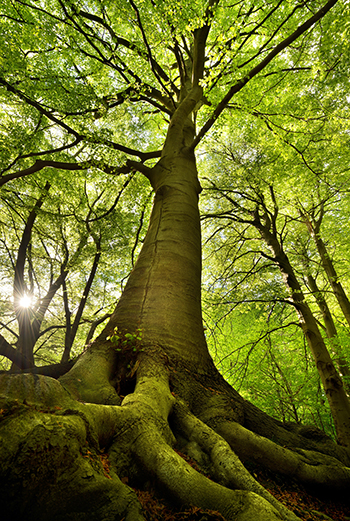
Proper care of a Beech Tree can cause it to live for hundreds of years!
Like all trees in the Chicago area, American beech trees are susceptible to diseases and harmful insects that can cause damage to the leaves, branches, and bark of the tree. One of the biggest threats to the American beech tree is beech bark disease which is a fungal disease that can girdle and kill the tree. American beeches can also have problems with a number of different insects such as beech blight aphids as well as wood boring and bark beetles. The following are the most common diseases and pests you should watch for with your American beech trees:
Disease
- Beech Bark Disease: Beech bark disease is the most serious threat to American beech trees. This disease is caused by the fungus Nectria which attacks beech trees through wounds created by insects such as the beech bark scale. Infected trees develop cankers on the bark and these cankers may develop pimple-like fruiting structures. The affected bark will become cracked and eventually the tree will become girdled which will kill the tree. The best way to control beech bark disease is to control the insects that make the tree vulnerable to the disease.
- Bleeding Canker: Bleeding canker is another fungal disease that attacks the root and trunk of American beech trees. This disease is caused by the fungus Phytophthora which causes large cankers to form on the roots and several feet up the trunk. The cankers appear reddish brown in color and they ooze reddish brown sap. New leaves on affected trees stay small and yellow and eventually the branches are killed off. Trees infected by bleeding canker need to be removed.
- Laetiporus Root Rot: Laetiporus root rot is a disease caused by the fungus Laetiporus sulfureus which causes shelf-like fruiting structures to form on the bark of the tree. The bark on infected trees will become depressed and cracked and the branches will weaken, making the tree susceptible to wind damage. The fruiting structures are yellow, pinkish, or orange in color and they become white with time. These fruiting structures usually form in the summer or fall and die off during the winter, but they leave behind spores that form new fruiting structures the next summer. Once the fruiting structures appear, the tree has already sustained serious damage.
Insects
- Beech Scale: Beech scale, also known as wooly scale, is a scale insect that feeds on the bark of beech trees. The holes that these insects form in the bark are what make the tree susceptible to beech bark disease. These insects are very small, cream colored insects that lay eggs on the bark and feed on the sap in the bark tissue. A beech scale infestation on its own is not enough to kill the tree, but it leaves the tree open to the deadly beech bark disease.
- Beech Blight Aphid: These small insects form colonies on the leaves and branches of beech trees and feed on the sap. Aphids leave behind honeydew excretions on the leaves and branches they infest which attracts fungus and other insects. These insects don’t cause serious damage to the tree but can lead to branch dieback if not controlled. Insecticides for aphids can effectively control these infestations.
- Wood Boring Beetles: There are several wood boring beetles that can affect beech trees, the most common is the Trypodendron domesticum. This blackish-brown weevil bores tunnels into the wood of the tree which interrupts sap flow and causes wood decay. This quickly weakens the tree and leads to dieback.
- Beech Buprestid: The beech buprestid (Agrilus viridis) is a borer that typically infects small, young trees. The larvae of these borers form tunnels by boring into the wood of small branches in the upper crown and they work their way to the larger branches and trunk. The tunnels created by the larvae will girdle the branches and cause major dieback.
American Beech Tree Care Tips
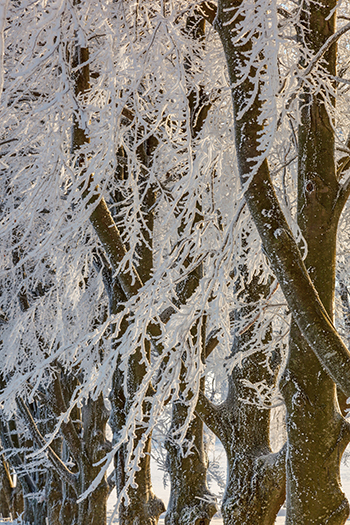
Proper care of your American Beech Tree will keep it healthy all year long, even through an icy cold Chicago winter
The tall, expansive canopy and silver-gray bark contribute to the natural beauty of the American beech tree which makes it a great addition to a landscape. Like with any other tree, the American beech needs the proper care to preserve its beauty and help it live a full, healthy life. The following tips will help you care for your beech trees:
- Planting: American beech trees grow quite tall, so they need plenty of space to grow uninterrupted. Plant your beech tree in an area where it will have room to grow, and where the soil is well-drained and acidic. These trees do better in full sun, but they also have a high tolerance to shade.
- Watering: American beech trees need to be watered regularly for the first year or two after planting. Once it becomes established, it only needs to be watered during droughts to prevent fungal infections and scorched bark. The root system of these trees is shallow, so it is best to soak the surrounding soil when watering.
- Mulching: A 2-3 inch layer of organic mulch spread over the root system will help retain water for the shallow roots and prevent the growth of weeds that would compete with the roots for nutrients and water.
- Fertilization: Fertilization is beneficial for young beech trees to help them grow and become established. Applying a granular fertilizer early in the spring will provide it with the nutrients it needs to grow and resist diseases.
- Pruning: American beech trees do not need a lot of pruning. They should be pruned if two branches are making contact with each other to prevent damage, and suckers should be removed with pruning as well. The best time to prune beech trees is during their dormant period in the winter, or early in the spring before the leaves appear.
Professional Tree Care for American Beech Trees
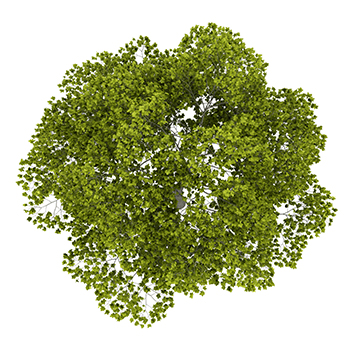
American Beech Trees make excellent, long-lived shade trees on your Chicago, IL property
American beech trees can greatly enhance your landscape with its beautiful bark, expansive canopy, and beechnuts that attract wildlife. However, these trees do need the proper care to protect them from harmful insects and serious diseases like beech bark disease that can lead to the death of the tree. The best way to ensure that your beech trees are well cared for is to have the professional arborists of Hendricksen Tree Care provide tree care and maintenance services.
At Hendricksen Tree Care, our ISA certified arborists are ready to provide complete tree care services for Chicago area trees, including the American beech tree. We can effectively diagnose and provide treatments for insect infestations and diseases, and we also offer ongoing tree care that includes fertilization, pruning, and preventative care to avoid insect infestations and disease. Through our ongoing care services, our arborists will provide everything your trees need to resist disease and grow to their full potential. Hendricksen Tree Care proudly services homes and businesses in the north and northwest Chicago suburbs including Arlington Heights, Palatine, Barrington, Lake Zurich, Glenview, Mount Prospect, and the surrounding areas.
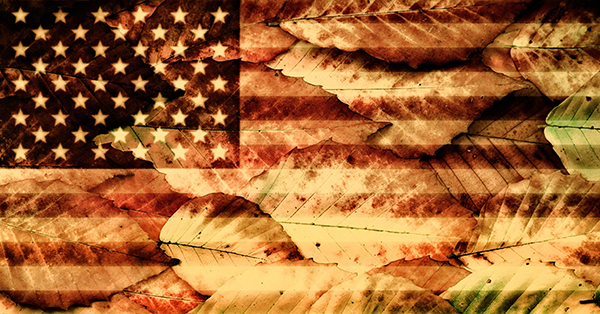
The arborists of Hendricksen Tree Care can provide effective care and maintenance for beech trees in the Chicago area.
Look for the next installment of our series on the native trees of Chicago.
